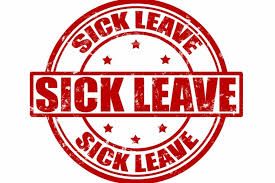
Studies have found it is a significant problem for small businesses.
In the UK, for example, one third of all sick leave taken by employees is for reasons other than ill-heath, costing the UK economy £4 billion a year, according to a survey from the Chartered Institute of Personnel and Development (CIPD).
The survey found that 94 percent of organizations consider sickness absence a ‘significant’ or ‘very significant’ burden on their business. Nearly half of employers see home and family responsibilities as a major cause of non-health related absenteeism.
The US, a nation that is generally perceived as having a highly productive workforce, is also faced with a high level of unscheduled absenteeism. According to CCH Incorporated, a publisher of business products, sick leave can cost up to an average of $602 per employee, per year. This does not include indirect costs such as overtime pay for other employees, hiring temps, missed deadlines, lost sales, sinking morale and lower productivity.
A survey found that 72 cents of every dollar of costs related to employee absence stems from lost productivity, rather than hard costs, such as health care and disability benefits.
And it is not just businesses in the UK and US that suffer. Mark Wooden of the Australian National Institute of Labor Studies estimates that during any given week, around 4.2 percent of the Australian workforce would be absent from work for at least one day.
In 1995, the Australian Bureau of Statistics revealed that 10 percent of employees questioned during a survey had taken sick leave, or a “sickie”, within a two-week period.
Seven percent admitted they had taken sick leave for reasons other than attending medical or dental appointments, or for ill health, physical disability, or pregnancy – which is why sick leave is regarded as such a problem.
The Kids Down Under website described the “sickie” as, “a paid day off work, usually not due to illness” – in other words, an unofficial holiday which takes advantage of the industrial awards system which gives most full-time employees in Australia the right to paid leave for illness.
So how should you deal with this as a manager?
Perhaps the best thing you can do if you believe your team members are abusing sick leave entitlements, is to find out why.
If you’ve hired the right people for the work you do, it’s unlikely they’re staying away due to lack of interest or from sheer laziness – although the odd shirker can always slip through the recruitment screening process.
It’s more likely that it comes down to one of the following issues:
- they are genuinely ill,
- they suffer from some form of intimidation or abuse in the workplace,
- they have problems with their supervisors or fellow team members,
- they feel overworked and incapable of coping, or
- they need to care for a sick child, partner or relative.
Expert on working relations, Glenn Weller, says that poor working relations with a fellow team member, accompanied by abuse or intimidation, is one of the major causes of workplace absenteeism. Another major cause is care for a sick child, adult, or aged relative.
What can you do to reduce the amount of bogus sick leave taken by team members?
Wooden suggests you stay away from “the time-honored but sure-to-fail” method of reducing sick leave entitlements, and look at examples set by more innovative workplaces which have introduced concepts such as unlimited or needs-based sick leave.
He says six employers with such arrangements in place for over 12 months all experienced a drop in the amount of sick leave taken by their employees.
Some experts suggest paying new team members two days of sick leave when they first join your company.
They will consider that as a windfall, however, when they take their first two days of [actual] sick leave entitlement, they will not be paid. This could work as a real incentive for team members not to abuse sick leave entitlements.
Perhaps a better answer is to look at the problem sympathetically and pro-actively.
If team members are staying away due to conflict with supervisors or fellow team members, try to find out the underlying cause of that conflict and resolve it.
If they’re taking days off because they feel overworked and unable to cope, why not see if the workload could be more evenly distributed? Perhaps you need more people to handle it? Bear in mind, also, that a stressed-out team member can easily become physically ill.
If team members are staying away to care for sick children, partners, or relatives, perhaps you can find a way to incorporate their caring duties into working hours by allowing them to work reduced hours from home.
However, if it comes down to just laziness or lack of interest, you’ll probably need to give the responsible team members a warning and a chance to “pull up their socks”.
Whatever you do, try to find and tackle the cause of the problem rather than the symptoms.
Employers who have done this appear to have had more success at reducing the abuse of sick leave than those who simply sought to reduce sick leave entitlements and punish the “shirkers”.
Employees are generally unlikely to take their jobs for granted, and even more unlikely to deliberately do anything that would jeopardize them.
Copyright 2003, RAN ONE Inc. All rights reserved. Reprinted with permission from www.ranone.com,